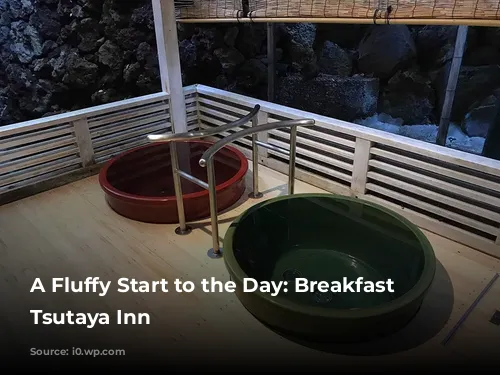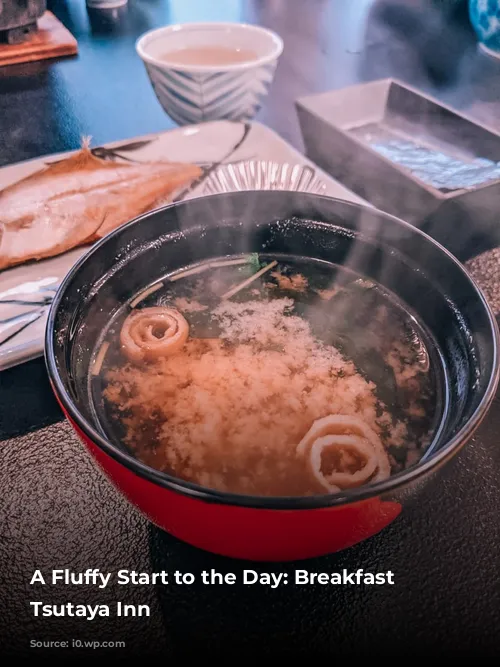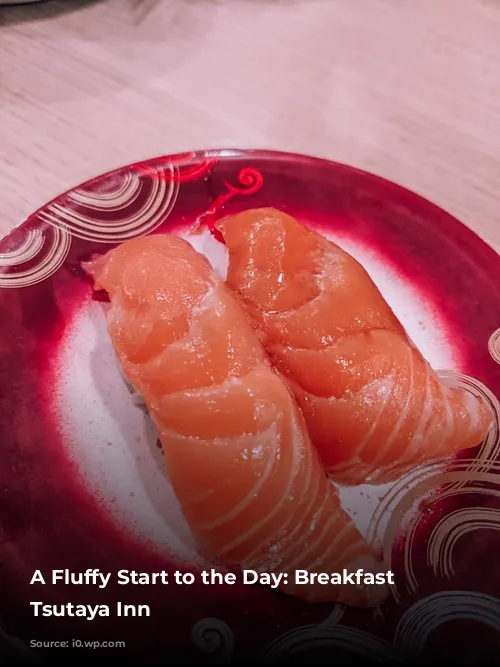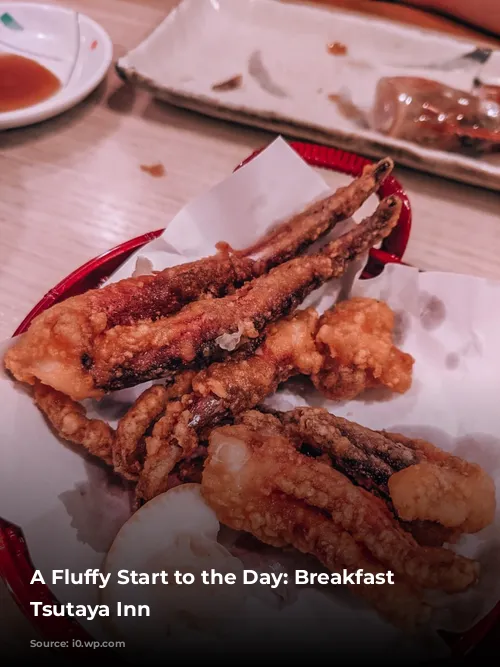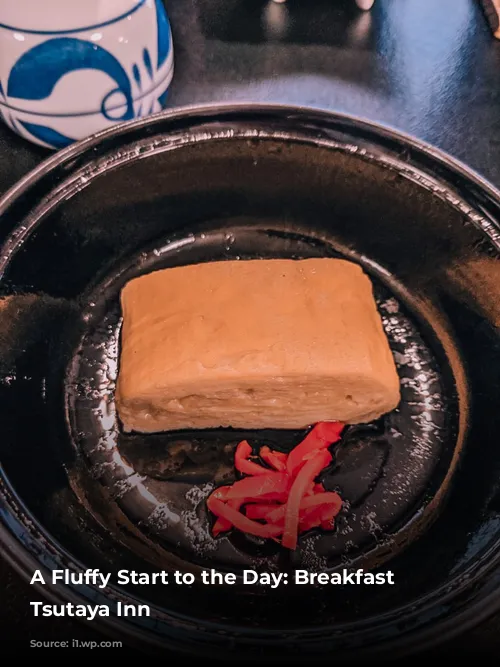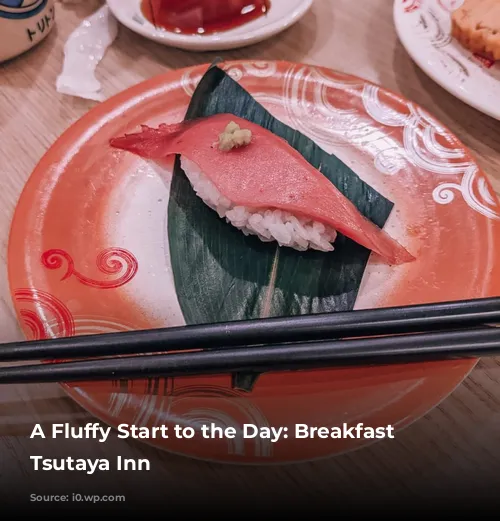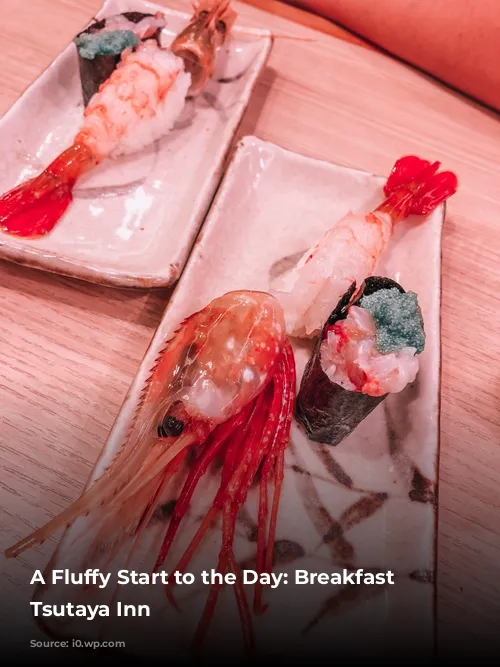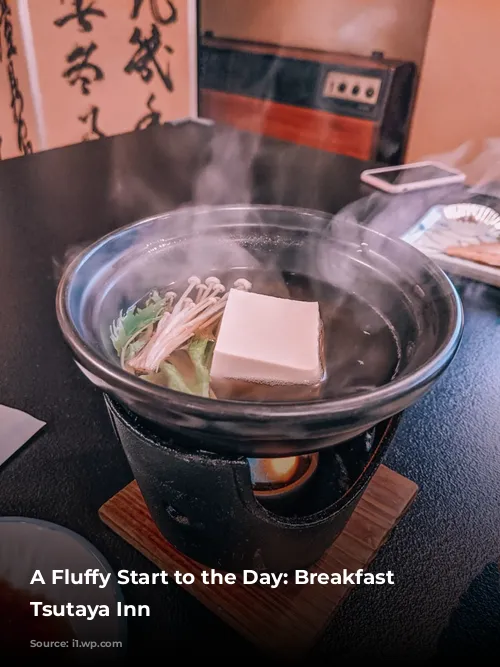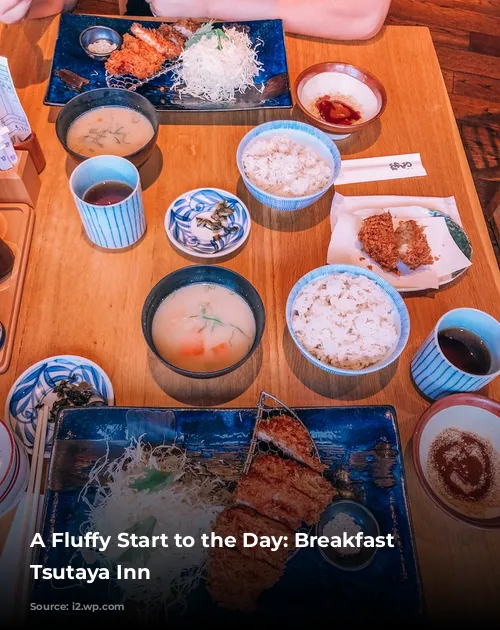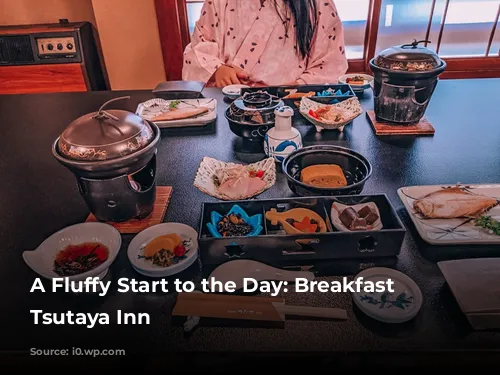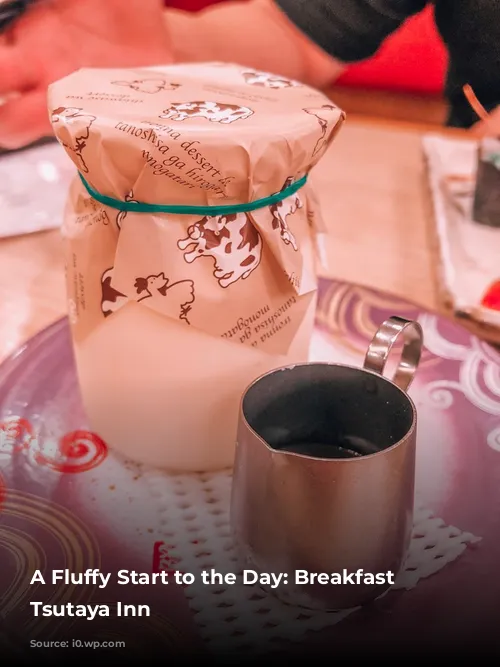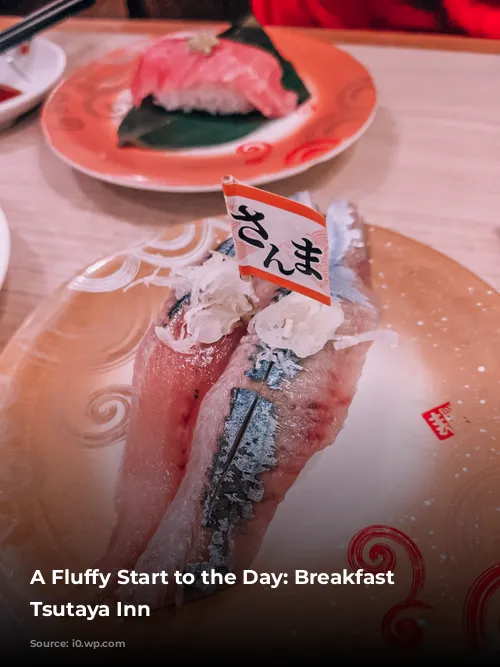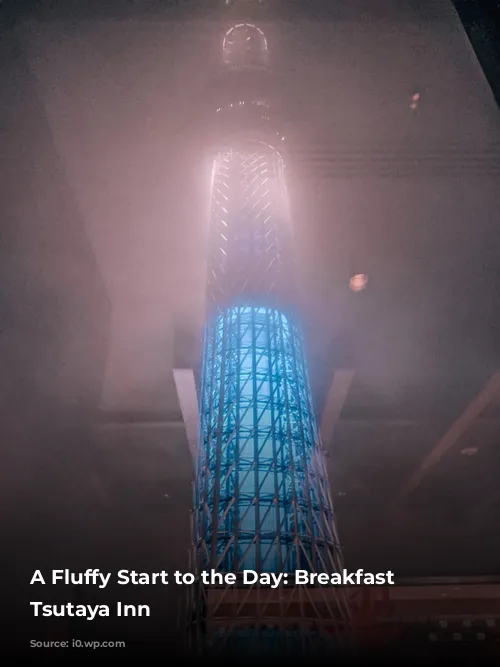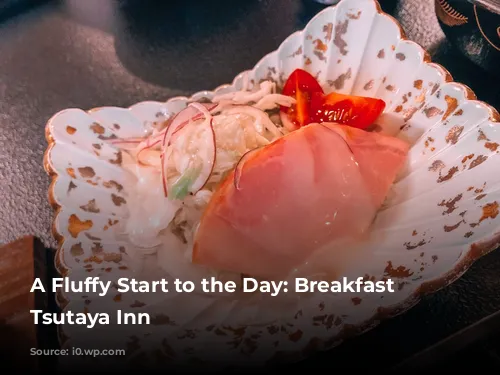We woke up early, energized by our comfy futons and excited for the day ahead. Our ryokan’s breakfast service was calling, promising a delightful start to our final day in Kinosaki.
The breakfast, served in a communal dining room, was a beautiful display of colorful dishes. Each plate was a work of art, showcasing Japanese culinary traditions.
A warm bowl of miso soup, the perfect way to wake up, filled my senses with its savory aroma and comforting heat. A fluffy tamagoyaki, a sweet egg omelet, melted in my mouth with every bite.
The main course consisted of a large bowl of silken tofu, gently simmered in daikon broth. It was served with fresh vegetables and mushrooms, creating a balanced and flavorful combination. Alongside the tofu, there was a plate of fluffy rice and a simple, grilled mackerel.
A small tin foil cup held a curious delicacy: acorn jelly. Its jelly-like texture and slightly fermented taste were a surprising and delightful experience.
The breakfast also included a variety of side dishes, presented in a trio of dainty boxes. One held a delicate acorn jelly, while the others were filled with carrot jelly and seaweed jelly. Though similar in taste, each one offered a unique textural experience.
A small salad, featuring mayonnaise and a few slices of cold ham, was the least memorable item on the menu. The breakfast, while pleasing, had a common, subtle flavor profile. It was a gentle way to start the day, but paled in comparison to the delicious dinner we enjoyed the night before.
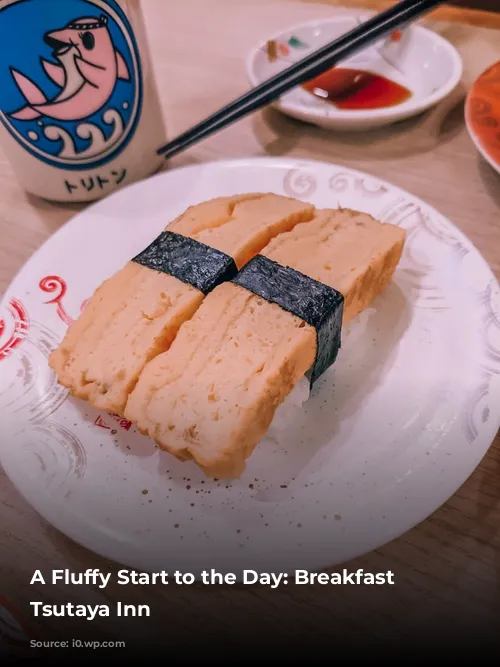
A Quick Dip Before Departure: Mandara-Yu Onsen
We wanted to squeeze in one last hot spring experience before departing Kinosaki, so we rushed to the Mandara-Yu onsen, located next to our ryokan. As the oldest hot spring in Kinosaki, it promised a unique and traditional experience.
The onsen offered both indoor and outdoor pools, similar to the Kouno-Yu we visited earlier. Following the traditional hot spring etiquette, I enjoyed a relaxing soak in the indoor pool. However, when a large group of children entered, I decided to move to the outdoor area.
My excitement quickly turned to disappointment as I discovered that the outdoor pools were merely two small tubs, almost like basins. Though manageable for my petite frame, the tubs lacked the spaciousness of the Kouno-Yu’s outdoor pool.
Despite the limited space, the small tubs provided a sense of privacy and allowed me to stretch my legs. I found the sensation of the water spilling over the edge of the tub as I entered oddly satisfying.
After a final, relaxing soak, we returned to Tsutaya Inn to pack our belongings. The inn staff, with their usual thoughtful touch, arranged a car to take us to the train station. We left Kinosaki feeling truly pampered and cared for.
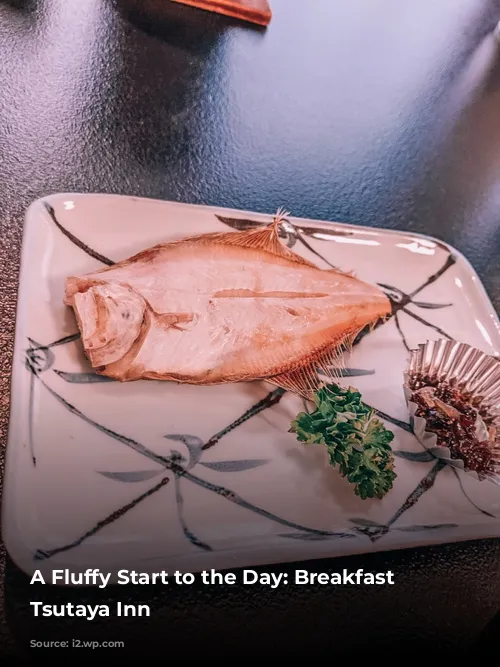
A Culinary Stop in Kyoto: Tonkatsu for Lunch
Our journey back to Tokyo required a stop in Kyoto. A one-way train ride from Kinosaki to Kyoto cost approximately $50 and took 2.5 hours.
Upon arriving at Kyoto Station, we decided to have lunch on the 14th floor, a level dedicated to restaurants. We opted for a tonkatsu (deep-fried pork cutlet) restaurant, hoping for a satisfying and hearty meal.
We ordered two premium tonkatsu sets, each costing $21. These sets featured a premium cut of meat and unlimited miso soup, cabbage, and rice.
We were pleasantly surprised by the deliciousness of the tonkatsu. It was a far cry from the greasy and oily experiences we often have. The cutlet was lightly fried, resulting in a crispy exterior and juicy, flavorful meat. The miso soup was packed with fresh vegetables, adding another layer of flavor.
We were impressed by the quality of the tonkatsu, which rivaled, if not surpassed, the renowned tonkatsu restaurant in Vancouver, Saku.
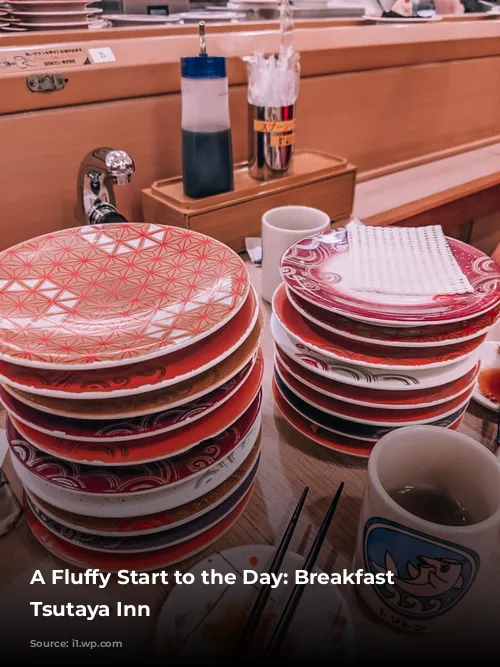
The Typhoon Looms: Anxiety and Preparations
After lunch, we continued our journey to Tokyo, but this time, we opted for regular reserved seats on the bullet train. The journey, spanning another 2.5 hours, cost $350 for two people. Our total travel time for the day reached a staggering 5 hours.
As the bullet train approached Tokyo Station, an announcement about Typhoon Hagibis sent shivers down our spines. The news of a major typhoon approaching Japan, a country prone to such natural disasters, filled us with a mixture of trepidation and concern.
While Japan is known for its exceptional typhoon preparedness, the severity of Typhoon Hagibis was undeniable. Headlines about record-breaking winds and evacuation orders for rural towns filled us with anxiety. Even global events like the Rugby World Cup were canceled due to safety concerns.
The looming typhoon cast a shadow of uncertainty over our trip. We felt a surge of anxiety as we tried to figure out how to prepare as visiting tourists. The atmosphere in Tokyo Station was tense, with delayed and canceled train schedules reflecting the city’s unease. We were relieved to find that our bullet train to Tokyo had not been canceled and hurried to our hotel in the Asakusa district.
